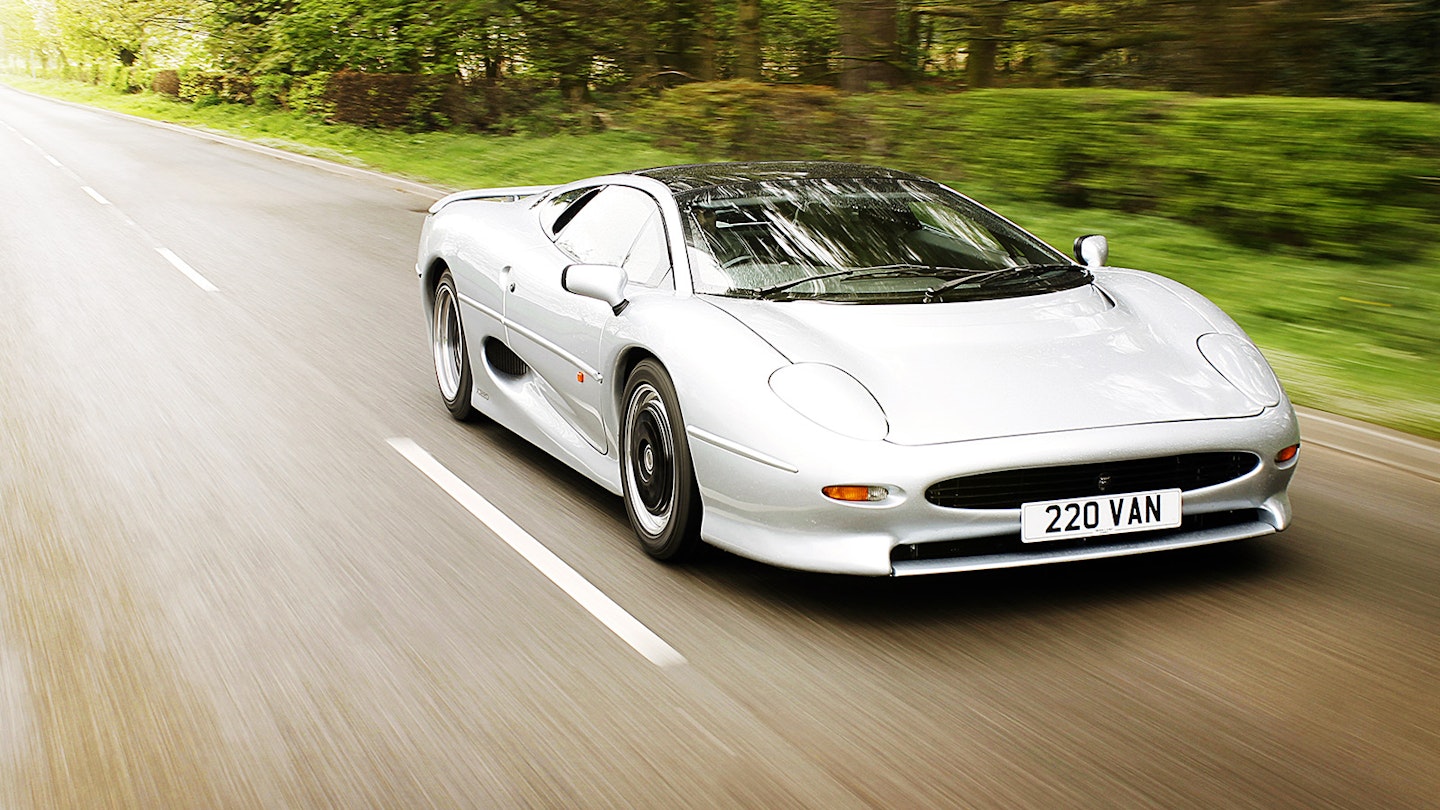Nick Cockburn has wanted to drive an XJ220 since the height of the supercar ‘space race’. Will the smile on his face be as wide as the car?
The supercar wars were our space-race,’ says Classic Cars reader Nick Cockburn as he roams Jaguar XJ220 specialist Don Law’s treasure-trove workshop. ‘I missed out on the race for the Moon, but I was in my early twenties when all these manufacturers were vying to see who could build the world’s fastest car. And, unlike the space-race, there was a British entry we could rally behind: the Jaguar XJ220. That’s why I’ve always wanted so badly to drive one. It’s not just our EB110 or Diablo, it’s our Apollo XI.’
The XJ220 we’ve come to rain-refreshed, rural Staffordshire to drive is extremely special in itself. ‘This is chassis 004,’ Law tells us. ‘In 1991, it was taken to the Fort Stockton Test Center in Houston, Texas to do some tyre-testing. It was there, in the hands of Le Mans driver Andy Wallace, that the XJ220 first hit its famous 217mph top speed. This was the very car that made all the headlines.’
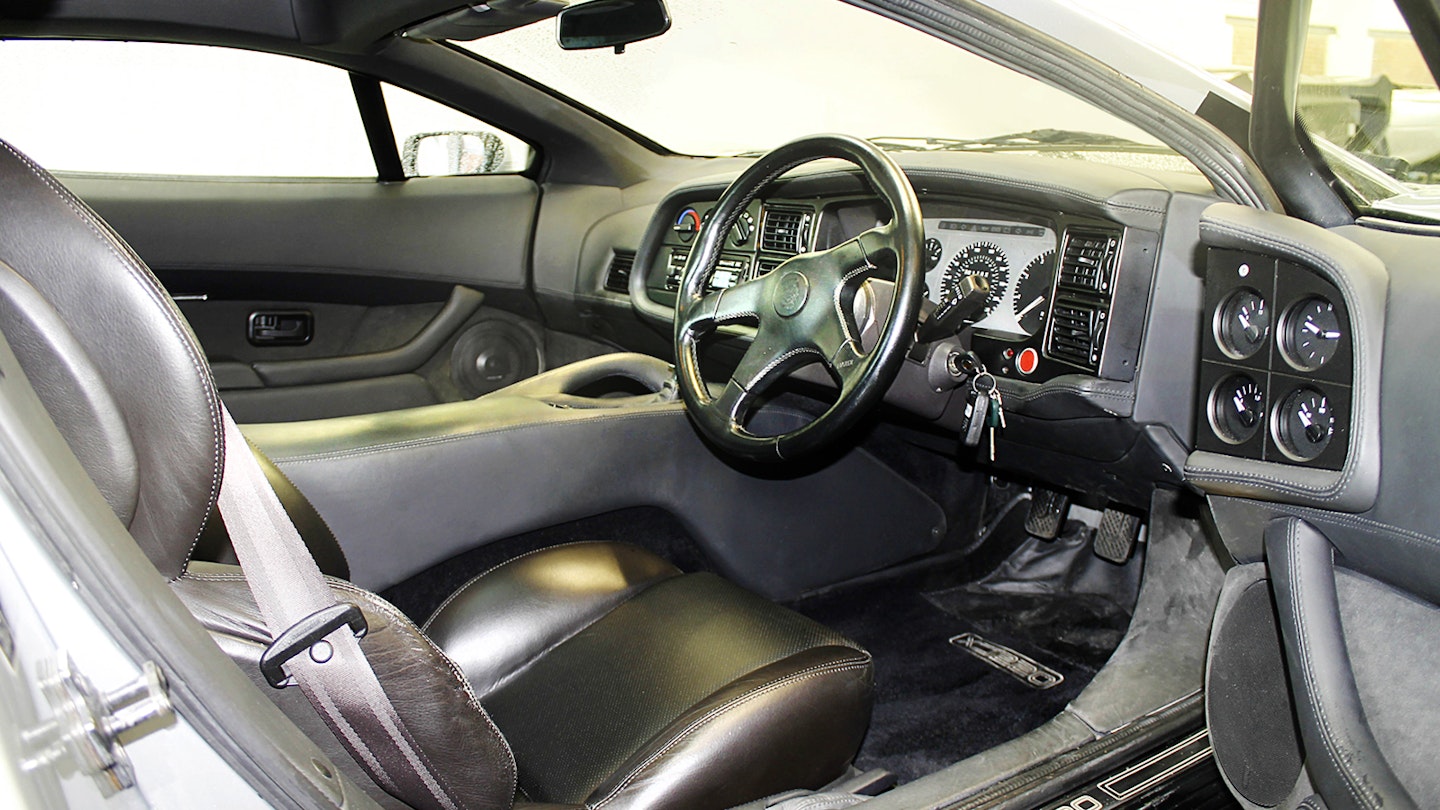
I look over at Nick. He responds to this news with a mixture of excitement, stunned silence and fear. The weight of impending responsibility has landed so hard on his shoulders he’s almost winded by it. ‘It’s more than just a car, it’s a piece of history – my history,’ Nick whispers reverentially. ‘I remember it all so vividly.’
At more than 6ft tall, Nick was worried he might not comfortably fit in the XJ220, so he’s surprised to find the interior so accommodating, and feeling so airy with its full-length panoramic sunroof. ‘It’s so beautiful,’ he says as he marvels at the subtle, curving slats sunk into the rear three-quarter window. ‘I think it’s the effect of so many curving lines, but somehow it doesn’t seem as old as it actually is – certainly not 20 years. If someone wheeled it out today and said it was a McLaren P1 rival, I’d believe them. I can overlook the Rover 400 tail lights.’
Nick turns the ignition key and hits the starter button. Behind our heads the Group C-derived V6 bursts aggressively into life, harsh metallic whips of sound lashing wildly out of the engine bay. It quickly settles to an idle – a restless, bassy drilling with no concessions to civility, a noise straight from the Le Mans pitlane.
We pull away, the huge Jaguar ambling almost gracefully over the bumpy gravel driveway. Nick looks nervous, as Law’s words are still ringing in his ears, ‘Don’t slip the clutch,’ he warned. ‘It has a unique twin-plate organic clutch designed especially for the car, and you have to treat it like a switch, either on or off. If you find yourself in traffic, stop, put it in neutral, allow a gap to form and drive off when you’ve got enough space for a decent 30mph run. If you crawl along on the clutch, the plates will start to melt and deform within 15 minutes.’
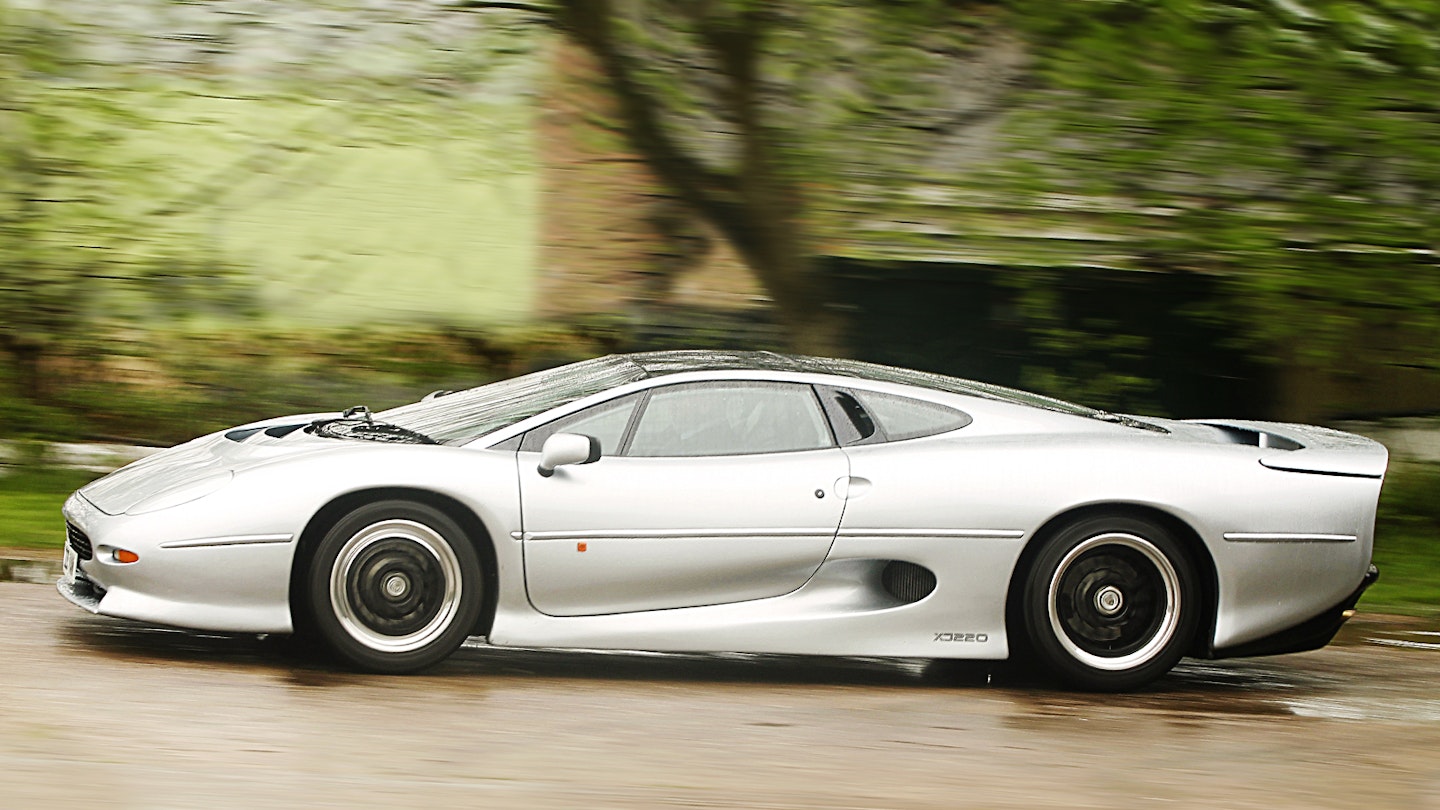
Thankfully, we have several miles of sparsely populated Staffordshire and Cheshire roads ahead of us, broad and sweeping. They’d be fun in Nick’s old Mazda MX5, but how does this 7ft 3in wide racer cope? After a few silent miles and the first blood-draining lunge around the rev counter when we find a straight stretch of road, Nick’s gaining confidence, planting the throttle deeper. ‘It’s big, but its size isn’t intimidating because it’s so well composed,’ he says, eyes fixed on the road’s meandering vanishing point.
‘There’s so much grip, it seems to pivot around you – and you only realise how wide it is when the wheels start bumping over the catseyes, then you glance in the passenger-side door mirror and see the white line at the other side.’
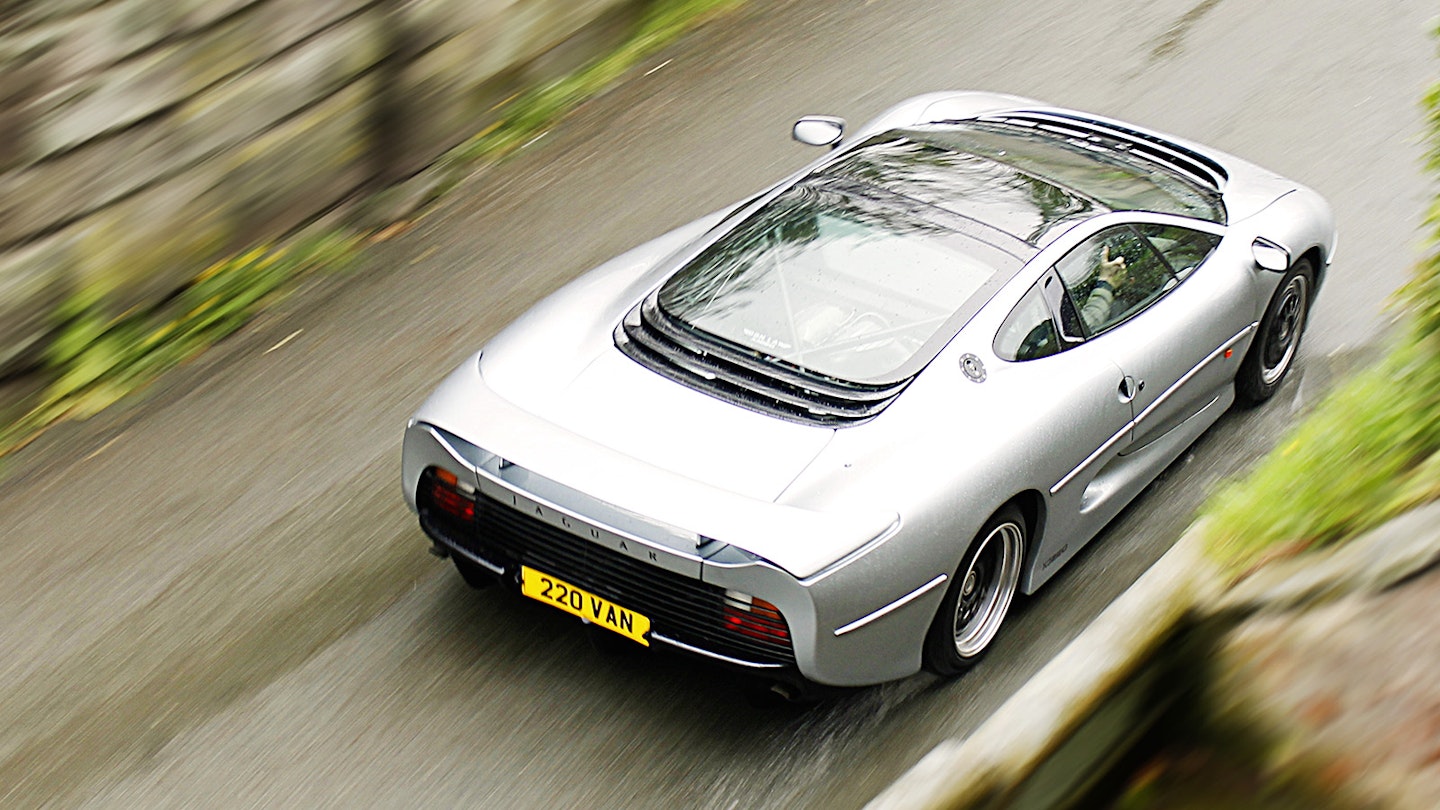
He chuckles as he lifts off the accelerator, anticipating an approaching humpback bridge, and hears the frenetic mixture of turbo wastegate chatter and coruscating drivetrain. ‘That sound is addictive – as addictive as feeling the shove in your back as the turbochargers boost,’ he says, pointing over his shoulder. ‘I want to accelerate just so I can lift off again and hear it. It must be absolutely monumental when it’s closing in on 200mph. I know there was a lot of criticism aimed at this engine – people wanted a V12, and I was expecting something that sounded like a diesel van, but I really can’t complain about this V6 or its noise. It’s an incredible note, so deep, full of potential. If anything, it sounds more powerful than any Jaguar V12 I’ve heard.
‘I’m also amazed at how comfortable it is,’ he adds. ‘Even when engineered to cope with all this power and do 200mph, it still adheres to the Jaguar values of grace, pace and space. It even rides well – better than my Porsche, in fact.’
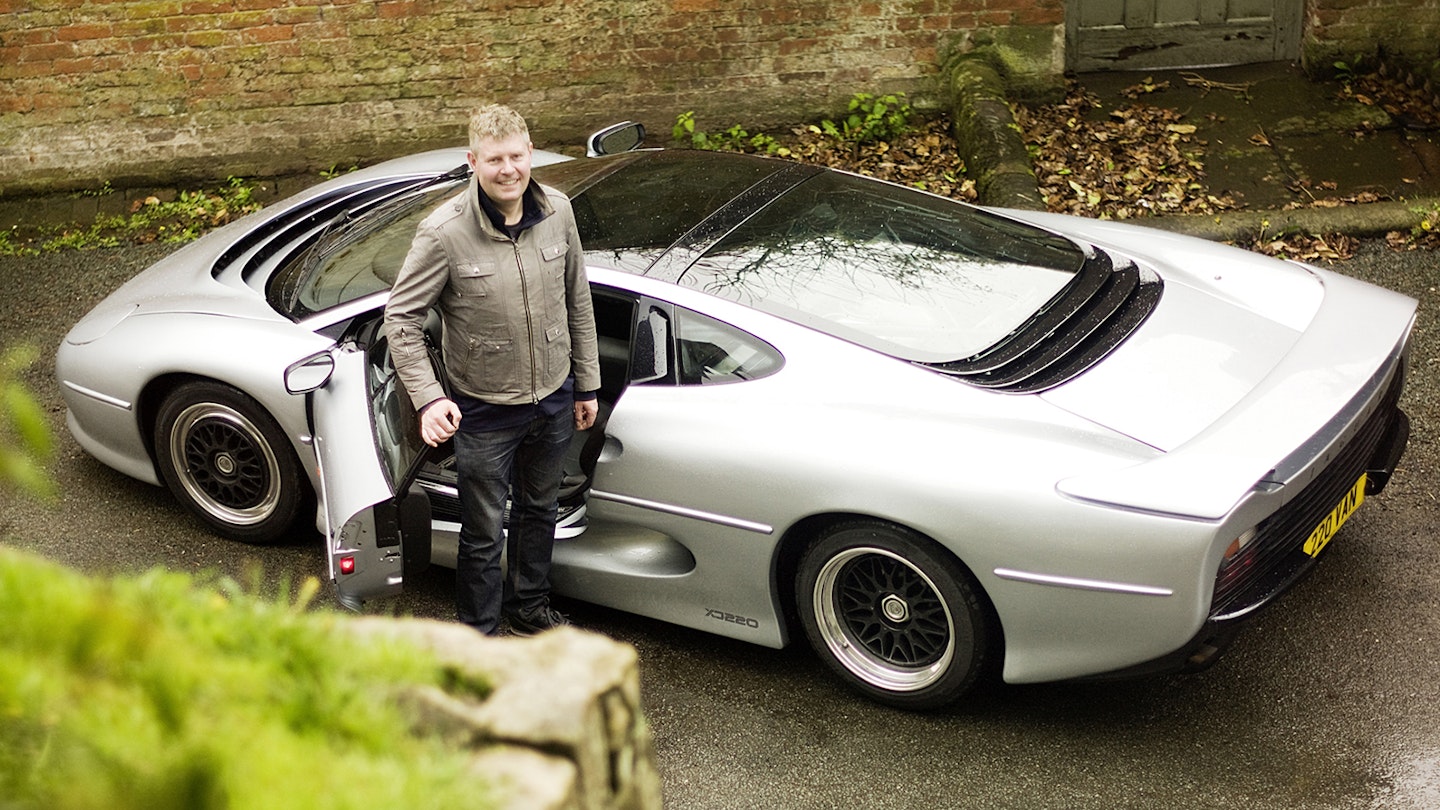
We pull into the small hamlet of Hill Chorlton and swap seats. Nick’s right – it is a roomy cockpit, a world away from the previous generation of cramped and awkward supercars typified by the Lamborghini Countach and De Tomaso Pantera. The gently rolling sea of grey leather covering the dashboard and the stark white-on-black instruments may look a bit dull by the standards of most supercars, but it’s all very clear and user-friendly, reinforcing the serious nature of my task: controlling 540bhp. Gauges in the driver’s door – turbo boost, voltmeter, temperature and clock – are its only concession to flamboyance.
I make sure the road is clear, select first gear with the tough little short-travel shifter and, heeding Law’s warnings, leap off the clutch as I feed in the power. The booming subterranean exhaust note builds to an unvarnished frenetic shriek, juddering like a masonry drill reaching the limits of its abilities before the brace of mighty turbochargers reach full compression and the drilling dissipates into an aeronautical gale of vast quantities of air being manipulated both around the high-downforce body and through the engine.

It’s a shame, then, that the XJ220 suffers from turbo-lag – but Law teaches us a useful technique to avoid it. ‘An XJ220 won’t want to do anything below 2500rpm,’ he told us. ‘It’s amazing when you realise that 2500rpm in second gear is only 30mph, because it’s geared to do in excess of 200mph. Above 2500rpm with the turbos boosting, it’s wonderfully tractable and, believe it or not, it’ll return around 25mpg while it’s at it.’
I’m glad I learned this, because my first run from rest was marred by jarring, truculent off-boost behaviour, as though the car was stuck in too high a gear, even in second. Once it’s boosting, though, the XJ220 is remarkably friendly. And Nick’s right: the grip summoned by those enormous tyres – 255/45 ZR17 at the front, 345/35 ZR18 at the rear – inspires immense confidence. The heavily weighted steering wheel fidgets a little on rough, straight roads, but turns in very smoothly, feeling locked to the road.
With this combination of howling air pressure, a glass canopy and the sensation of being hurled backwards, perhaps I should be drawing comparisons with fighter jets, but I won’t – partly because it so happens I’ve never piloted a fighter jet, and also because the XJ220 has reminded me of something altogether more earthbound and childishly entertaining – a rollercoaster. I’m not talking about the unpredictability of a rickety old deathtrap clinging to life in a faded seaside town, but rather the scientifically designed, ultra-intense high-tech attractions at Alton Towers.
Those rides, like the XJ220, entertain precisely because they are predictable, secure and safe, leaving you to hold on and enjoy the sensation of speed. The difference is, the XJ220 goes where you point it. The roads become your own personal thrill-ride carved into the landscape, the intensity governed by how quickly you can go, and how hard you dare corner.
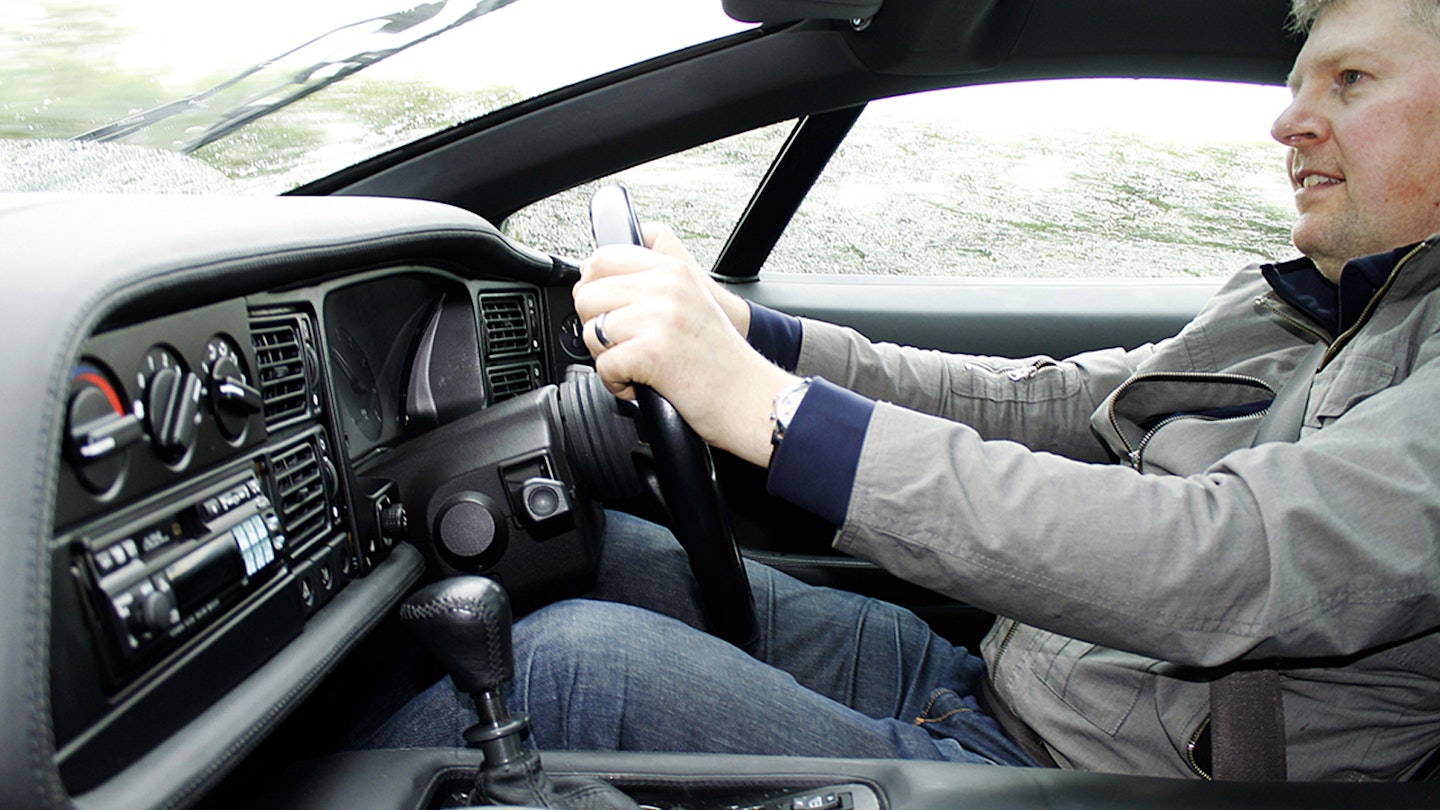
It’s in its element on roads like these. However, besides the tricky rituals to avoid wilting the clutch plates and prevent the turbo manifolds from cracking, the only thing that threatens to make the XJ220 unmanageable is its sheer size. It’s not just the width (it’s the widest British production car ever made, even more so than the Jaguar MkX) but the length. When it’s up to speed the XJ220 does a creditable job of disguising its bulk, but a near-total lack of rear visibility coupled with a very long rear end – and visibility that seems excellent until you realise there’s several feet of nose ahead – make it extremely hard to place in traffic. Forget trying to reverse-park it between two carelessly discarded hatchbacks, or thinking you’ll ever make it through that width restrictor – you can’t.
It’s these things that make Nick reconsider his dream car slightly. ‘I still want an XJ220 – more than ever, and mine would be in dark metallic red. But earlier on I’d have wanted to use it like my 911, driving it every day. Not any more. I suspect if I owned one I’d use it sparingly, and probably not as much as I’d like. Then again, if you could afford a car like this, you’d have something for every occasion anyway, wouldn’t you? The perfect journey for a car like this would be a long tour to the south of France – or round a racetrack.’

This has been an unusual List, because it’s both of us who’ve fulfilled a dream by driving the XJ220. For Nick, who works in web design, the XJ220 was a source of pride in British technical endeavour and workmanship, comparable to spacecraft in its pioneering spirit. For my pre-teen self, it was a mythical being glimpsed on overcast test tracks in the pages of Autocar & Motor.
Neither of us anticipated something quite so benign and unthreatening. However, we didn’t expect to completely relearn aspects of our driving style to realise this. ‘Am I put off?’ Nick asks rhetorically. ‘Not in the slightest. It’s the best car I’ve ever driven.’
